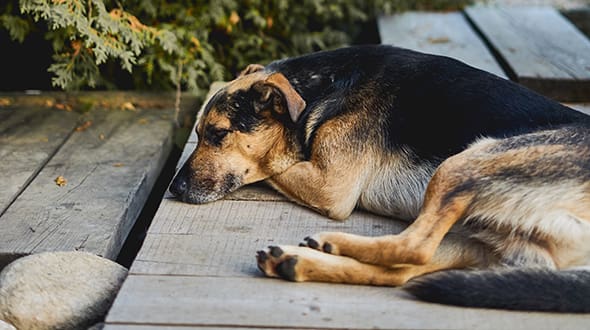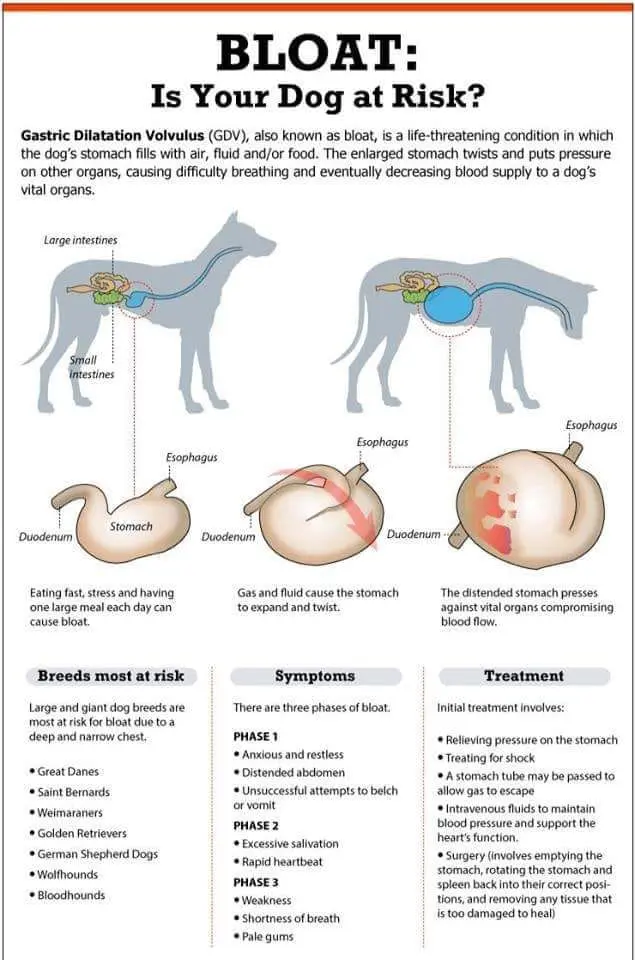If you’re a large dog owner, you’ve probably heard of bloat or GDV (gastric dilatation volvulus). It’s a life-threatening emergency in which every minute counts. This makes it incredibly scary. But do you know the symptoms to look for? Did you know that while very rare, even smaller dogs can bloat?
 Let’s take a look at what all dog owners need to know. This is some basic information that can help save lives, so if you know any new dog owners who might not have learned about this yet, please do share!
Let’s take a look at what all dog owners need to know. This is some basic information that can help save lives, so if you know any new dog owners who might not have learned about this yet, please do share!
For purposes of simplicity, we’re using the most commonly known name for this article, bloat. (This condition is also known as GDV, gastric torsion, or twisted stomach.) But the life-threatening factors of bloat are about far more than just a gassy belly after eating. This is bloating so severe that it can significantly reduce blood flow, rupture the stomach, and/or put pressure on the diaphragm which inhibits normal breathing. This can happen with or without the volvulus, or twisted stomach, part of the equation. Often, the stomach will also twist on itself, taking the spleen with it. This causes such severe restriction of blood supply and extreme pain that the dog will likely go into shock. Surgical intervention is required as quickly as possible to save the dog’s life.
Tens of thousands of dogs bloat each year. Different studies have shown mortality rates ranging from 10-33% even with surgical intervention.
Your ability to react quickly can save your pup’s life! Look for:
When in doubt, see your vet as quickly as possible! (If outside of standard business hours, we recommend our Raleigh clients contact Veterinary Specialty Hospital of the Carolinas for emergency services.)
Large dogs are most likely to experience it. Among them, deep-chested breeds are often considered higher risk such as Great Danes, boxers, and German shepherds. Other risk factors include age (adult and senior dogs are more likely to bloat), family history, and eating too quickly. It is also thought that only feeding dogs a single, large meal each day can increase risk compared to multiple smaller meals. There is some debate around other risk factors that are in your control, such as elevated feeding options. As bloat is a condition that continues to be studied, we recommend that you ask your vet for the most current information.
